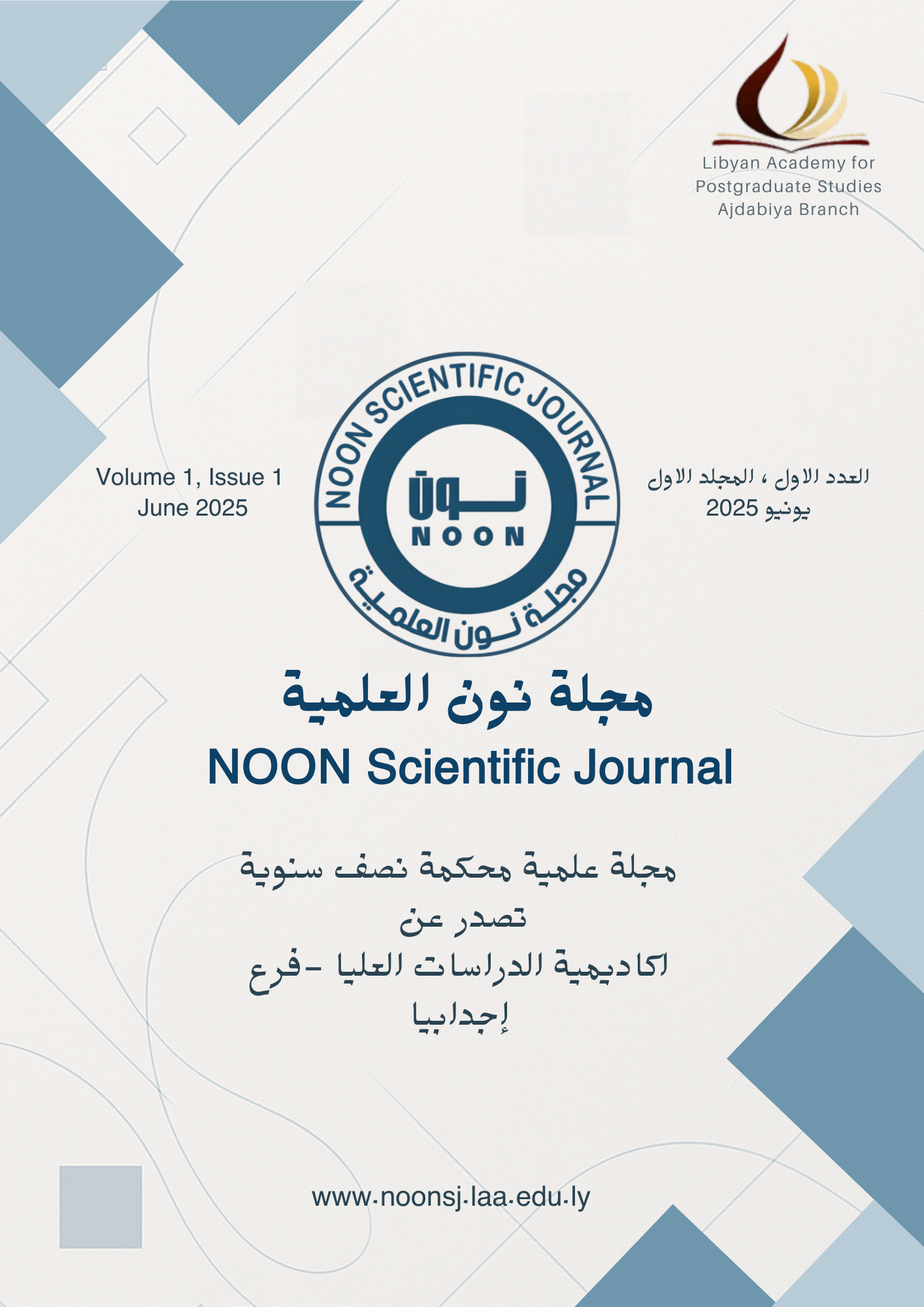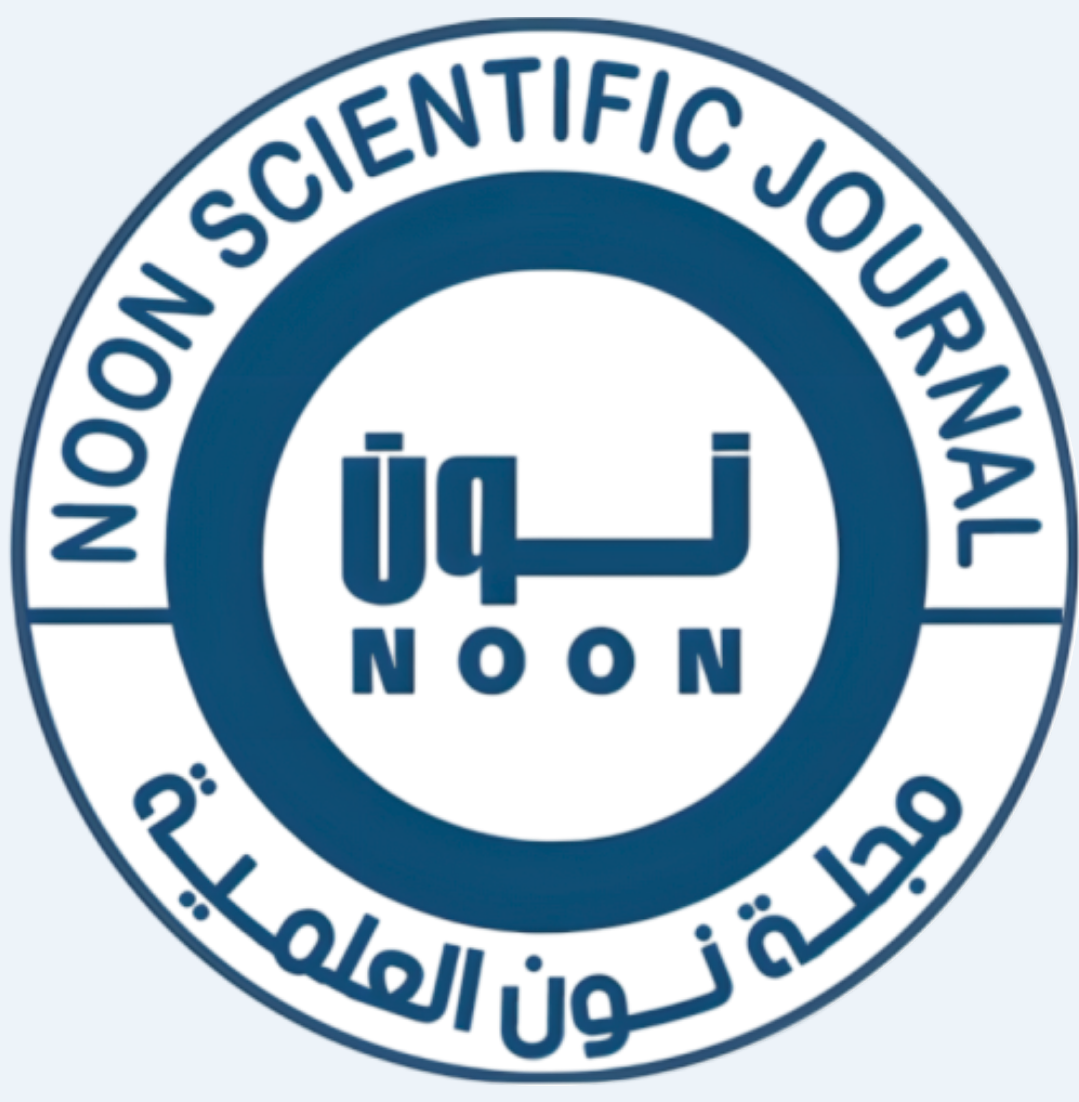Home \ Archives\vol 1, No 1, 2025\ Articles
UNRAVELLING THE FACTORS AFFECTING THE PERFORMANCE OF EMPLOYEES IN THE LIBYAN BANKING SECTOR
- Ahamad A.M. Alabead & Abdulkarim Emran Jibreel Ali (Authors)
- University of Benghazi, Al-Abyar Branch, Libya
Volume (1), Issue (1) , June 2025

Published: 06/30/2025
Keywords: Effectiveness; Employee; Performance; Banks; Libya
Abstract: Employee performance is a crucial determinant of any company’s long-term or short-term success; hence, it is believed to be influenced by a wide range of factors, including managerial attitude, organizational culture, information technology use, and financial incentives. It is undeniable that the majority of these factors have a positive effect on employee performance; therefore, the purpose of this study is to examine how employee performance in Libyan banking industries is impacted by managerial attitudes, financial incentives, organizational culture, and information technology. The data for this study were gathered using a postal questionnaire survey, which was administered to the employees who were chosen randomly from some of the largest banks in Libya. Several analyses of the data using SPSS software showed that among the four variables studied, only three variables (organization’s culture, financial rewards, and information technology) showed significant positive relationships with employee performance in Libyan banks.
References
Abbaspour, A., & Noghreh, A. (2015). Examine the relationship between organizational culture and job satisfaction of tourism bank employees in Iran. International Journal of Academic Research, 7(1): 63-68, doi:10.7813/2075-4124.2015/7- 1/B.11 Ahmadi, S.A.A., Salamzadeh, Y., Daraei, M., & Akbari, J. (2012). Relationship between organizational culture and strategy implementation: Typologies and dimensions. Global Business and Management Research: An International Journal, 4, 286-299. Retrieved from http://gbmr.ioksp.com Armstrong, M. (2009). Armstrong’s handbook of reward management practice: Improving performance through reward. Kogan Page Publishers. Armstrong, M., & Taylor, S. (2014). Armstrong’s handbook of human resource management practice. Kogan Page Publishers. Bader, H.A.M., Hashim, I.H.M., & Zaharim, N.M. (2013). Job satisfaction among bank employees in eastern Libya, American International Journal of Social Science, 2(1):30-44. Belias, D., Koustelios, A., Sdrollias, L., & Koutiva, M. (2013). The influence of demographic features on the job satisfaction of Greek bank employees. International Journal of Human Resource Management and Research, 3(4): 15-28. Borman, W.C., & Motowidlo, S.J. (1997). Task performance and contextual performance: The meaning for personnel selection research. Human performance, 10(2): 99-109. Campbell, J.P., McHenry, J.J., & Wise, L.L. (1990). Modeling job performance in a population of jobs. Personnel Psychology, 43(2): 313-575 Chang, S., & Lee, M.S. (2007). A study on relationship among leadership, organizational culture, the operation of learning organization and employees’ job satisfaction. The Learning Organization, 14(2): 155-185.
Claver, E., Llopis, J., González, M.R., & Gascó, J.L. (2001). The performance of information systems through organizational culture. Information Technology & People, 14(3): 247-260. Corbin, L.J. (1977). Productivity and job satisfaction in research and development: Associated individual and supervisory variables. Airforce Institute of Technology, 3. Dauda, Y.A., & Akingbade, W.A. (2011). Technology innovation and Nigeria banks performance: The assessment of employee’s and customer’s responses. American Journal of Social and Management Sciences, Vol. 2(3), pp. 329-340. Dubrin, A.J. (2007) Leadership Research: Findings, Practice, and Skills. 5th Edition, Houghton Mifflin Company, Boston. Elnaga, A., & Imran, A. (2013). The effect of training on employee performance. European Journal of Business and Management, 5(4): 137-147. Elsakit, O.M. (2017). Influences on the development of the Libyan banking sector, Journal of Business and Management, 19(11): 60-73. Hui, T.K., Wan, D., & Alvin, H. (2007). Tourists’ satisfaction, recommendation and revisiting Singapore. Tourism Management, 28, 965–975. Hyz, A. (2010). Job satisfaction and employee performance of Greek banking staff: an empirical investigation, Acta Universitatis Lodziensis. Imran, M., & Tanveer, A. (2015). Impact of training and development on employees’ performance in banks of Pakistan. European Journal of Training and Development Studies, 3(1), 22–44. Iqbal, N., Anwar, S., & Haider, N. (2015). Effect of leadership style on employee performance. Arabian Journal of Business and Management Review, 5(5): 1-6. Jamal, M. (2007). Job stress and job performance controversy revisited an empirical examination in two countries. International journal of stress management, 14(2): 17-XX. Janssen, O., & Van yperen, N.W. (2004). Employees’ goal orientations, the quality of leader-member exchange and the outcomes of job performance and Job Satisfaction. Kline, T.J.B. & Boyd, J.E. (1994). Organizational structure, context and climate: Their relationship to job satisfaction at three managerial levels. Journal of General Psychology, 118(4): 305-316. Koustelios, A., & Bagiatis, K. (1997). The Employee satisfactory inventory (ESI): Development of a scale to measure satisfaction of Greek employees. Educational and Psychological Measurement, 57, 469-476. Koustelios, A., & Kousteliou, I. (1998). Relations among measures of job satisfaction, role conflict, and role ambiguity for a sample of Greek teachers. Psychological Reports, 82, 131-136. Kozak, M. (2001). Repeaters’ behavior at two distinct destinations. Annals of Tourism Research, 28(3): 784–807. Kozak, M. (2002). Comparative analysis of tourist motivations by nationality and destinations. Tourism Management, 23(3): 221–232. Krejcie, R.V., & Morgan, D.W. (1970). Determining sample size for research activities.Educational and psychological measurement, 30(3): 607-610. Lok, P., & Crawford, J. (2004). The effect of organizational culture and leadership style on job satisfaction and organizational commitment: A cross-national comparison. Journal of Management Development, 23(4), 321-338. Lu, H., While, A.E., & Barriball, K.L. (2005). Job satisfaction among nurses: A literature review. International Journal of Nursing Studies, 42, 211-227. Lund, D. (2003). Organizational Culture and Job Satisfaction. Journal of Business and Industrial Marketing, 18(3): 219-236. Maldeni, H., & Jayasena, S. (2009). Information and communication technology usage and bank Branch performance, The International Journal on Advances in ICT for Emerging Regions, 02(02): 29-37, DOI:10.4038/icter.v2i2.1386 Mansoor, M., & Tayib, M. (2010). An empirical examination of organizational culture, job stress, job satisfaction within the indirect tax administration in Malaysia. International journal of Business and Social Sciences, 01(01): 81-95. Maxwell, S.E., Kelley, K., & Rausch, J.R. (2008). Sample size planning for statistical power and accuracy in parameter estimation. Annual Review of Psychology, 59, 537-563
McKinnon, L.J., Harrison, L.G., Chow, W.C., & Wu, A. (2003). Organizational culture: association with commitment, job satisfaction, propensity to remain and information sharing in Taiwan, International Journal of Business Studies, 11(1): 25-44. Mention, A., & Bontis, N. (2013). Intellectual capital and performance within the banking sector of Luxembourg and Belgium, Journal of Intellectual Capital 14(2): DOI:10.1108/14691931311323896 Mohamud, A. (2015). Employee motivation and project success of NGOS in Mogadishu-Somalia. https://ir.kiu.ac.ug/handle/20.500.12306/13726 Mosadeghrad, A.M. (2003). Principles of health care administration, Tehran: Dibagran Tehran. Muda, I., Rafiki, A., & Harahap, M.R. (2014). Factors influencing employees’ performance: A Study on the Islamic Banks in Indonesia, International Journal of Business & Social Science, 5(2): 73-80. Navaie-Waliser, M., Lincoln, P., Karutri, M., & Resich, K. (2004). Increasing job satisfaction, Quality care, and coordination in home health. Journal of Nursing Administration, 34(2): 8892. Neher, A., & Maley, J. (2019). Improving the effectiveness of the employee performance management process: A managerial values approach, November 2019International Journal of Productivity and Performance Management, DOI:10.1108/IJPPM-04-2019-0201 Northouse, P.G. (2007). Leadership: Theory and practice (4th edition). Thousand Oaks, CA: Sage. Ojo, O. (2008). Impact assessment of corporate culture on employee job performance. Business Intelligence Journal, 2(2): 388-397. Petrick, J.F., & Backman, J.S. (2002). An examination of golf travelers’ satisfaction, perceived value, loyalty, and intentions to revisit. Tourism Analysis, 6(3–4): 223–237. Rashid, R., & Waheed, A. (2012). Transformational leadership style as a predictor of decision-making styles: Moderating role of emotional intelligence. Pakistan Journal of Commerce & Social Science, 6, 257-268. Retrieved from http://works.bepress.com/rashidrehman/10 Saeed, K.A., & Bampton, R. (2013). The impact of information and communication technology on the Performance of Libyan Banks, Journal of WEI Business and Economics, 2(3): Saeed, R., Mussawar, S., Lodhi, R.N., Iqbal, A., Nayab, H.H., & Yaseen, S. (2013). Factors affecting the performance of employees at work place in the banking sector of Pakistan. Middle-East Journal of Scientific Research, 17(9):1200-1208. Seng, N., & Arumugam, T. (2017). Financial reward and motivation toward employee job performance in the hospitality industry in Klang Valley. Electronic Journal of Business & Management, 2(1): 51 60. Serenko, A., Abubakar, A.M., & Bontis, N. (2023). Understanding the drivers of organizational business performance from the human capital perspective, Knowledge & Process Management, 31(3): DOI:10.1002/kpm.1763 Shrivastava, A., & Purang, P. (2009). Employee perceptions of job satisfaction: Comparative study on Indian banks. Asian Academy of Management Journal, 14(2):65-78. Stup, R.E. (2005). Human resource management and dairy employee organizational commitment. The Pennsylvania State University, Pennsylvania, USA. Sudman, S. (1976). Applied Sampling. New York: Academic Press. Ting, I.W.K., & Lean, H.H. (2009). Intellectual capital performance of financial institutions in Malaysia, Journal of Intellectual Capital, 10(4):588-599, DOI:10.1108/14691930910996661 Tran, D.B., & Vo, D.H. (2018). Should bankers be concerned with Intellectual capital? A study of the Thai banking sector, Journal of Intellectual Capital, 19(2): 897-914.DOI:10.1108/JIC-12-2017-0185 Um, S., Chon, K., & Ro, Y. (2006). Antecedents of revisit intention. Annals of Tourism Research, 33(4): 1141–1158. Usman, A., & Ahmed, N. (2011). Determinants of performance: A case of the life insurance sector of Pakistan. International Research Journal of Finance and Economics, 61, 123–128. Uzkurt, C., Kumar, R. & Ensari, N. (2013). Assessing Organizational Readiness For Innovation: An Exploratory Study On Organizational Characteristics Of Innovativeness, International Journal of Innovation and Technology Management, 10(04): DOI:10.1142/S0219877013500181 Wall, T.D., Michie, J., Patterson, M., Wood, S.J., Sheehan, M., Clegg, C.W., & West, M. (2004). On the validity of subjective measures of company performance. Personnel Psychology, 57(1): 95-118.Werner, J.M. (2000). Implications of OCB and contextual performance for human resource management. Human Resource Management Review, 10(1): 3-24. Yoon, Y., & Uysal, M. (2005). An examination of the effects of motivation and satisfaction on destination loyalty: A structural model. Tourism Management, 26, 45–56. Yuksel, A., Yuksel, F., & Bilim, Y. (2010). Destination attachment: Effects on customer satisfaction and cognitive, affective and conative loyalty. Tourism Management, 31(2): 274–284. Yusoff, W.T.W., Mat, C.R.C., & Zainol, R.M. (2017). Predictors and consequences of job insecurity: A preliminary study of Malaysian bank employees. Geografia-Malaysian Journal of Society and Space, 10(3): 8-13.
